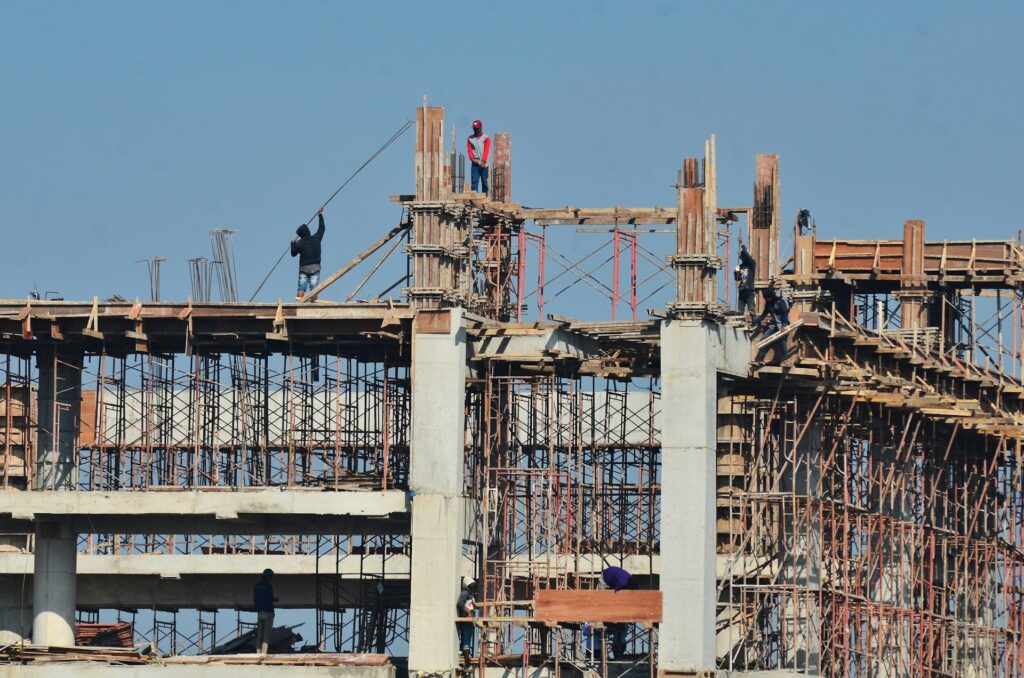
Running a construction project can be challenging. It involves many moving parts, strict deadlines, and tight budgets. Keeping everything on track requires skill, organisation, and a clear plan. It’s important to focus on several key areas to ensure a project goes smoothly.
In this article, we’ll explore how to effectively plan and schedule, communicate with your team, use technology, and manage risks to ensure your construction project runs smoothly.
Planning and Scheduling Effectively
Effective planning and scheduling are the backbone of any successful construction project. Start by creating a detailed project plan that outlines all the tasks and milestones. Break down the project into smaller, manageable sections and set deadlines for each task. This helps keep the project on track and makes it easier to manage.
Use a Gantt chart or a similar tool to visualise the timeline. This type of chart shows the start and end dates for each task and highlights any overlaps. It gives you a clear picture of what needs to be done and makes it easier to allocate resources and address potential bottlenecks.
Regularly update your schedule to reflect any changes or delays. Construction projects often face unforeseen issues, so it’s important to adjust your plan as needed. Hold regular review meetings to assess progress and make necessary adjustments. This keeps everyone aligned with the project’s goals and timelines.
Effective Communication with Your Team
Clear and effective communication is key to running a smooth construction project. Start by establishing a communication plan that outlines how information will be shared and who needs to be involved. This helps ensure that everyone is on the same page and prevents misunderstandings.
Hold regular team meetings to discuss progress, address issues, and plan the next steps. These meetings provide an opportunity for team members to ask questions, share updates, and brainstorm solutions to problems. Make sure these meetings are structured and focused to make the best use of everyone’s time.
Use multiple communication channels to keep the lines of communication open. Email, messaging apps, and project management software can all be useful tools for keeping everyone informed. Make sure that important information is documented and easily accessible to all team members.
Encourage open communication by creating a positive and collaborative environment. When team members feel comfortable sharing their ideas and concerns, it’s easier to identify potential issues and find solutions quickly. This helps keep the project moving smoothly and reduces the chances of delays or misunderstandings.
Utilising Technology and Tools
Using the right technology and tools can significantly improve the efficiency of a construction project. Construction management software is a great place to start. It helps track progress, manage schedules, and store important documents. This makes it easier to keep everyone informed and up to date.
Drones are another useful tool. They can be used for site surveys, providing aerial views that help identify potential issues early. This can save time and money by addressing problems before they become major setbacks.
Mobile apps can also play a crucial role. They allow team members to access project information and communicate on the go. This is especially useful on large sites where team members might not always be near a computer.
By integrating these technologies into your workflow, you can streamline processes and make your construction project run more smoothly. Technology can help you catch problems early, keep everyone informed, and reduce the time spent on administrative tasks.
Managing Risks and Challenges
Every construction project comes with its own set of risks and challenges. The key is to be prepared and have a plan to manage them. Start by identifying potential risks early on. This could be anything from weather delays to supply chain issues.
Once you’ve identified these risks, create a risk management plan. This should outline how you’ll address each risk if it occurs. Having a plan in place means you can act quickly and decisively when challenges arise.
Hold regular risk assessment meetings to update your team on any new risks and review the status of existing ones. This keeps everyone aware of potential issues and ensures that you can address problems before they escalate.
It’s also important to stay flexible. Construction projects can be unpredictable, so being able to adapt to changing circumstances is crucial. By staying prepared and flexible, you can manage risks more effectively and keep your project on track.
Conclusion
Running a construction project smoothly involves careful planning, clear communication, smart use of technology, and effective risk management. By focusing on these key areas, you can keep your project on schedule and within budget.
Edara Systems Australia can help you manage your construction projects more efficiently. Our expertise in compliance, tendering, and industry certification ensures that your project meets all necessary standards. Reach out to us today to find out how we can support your next construction project and help you achieve your goals with our Australian construction management software.



